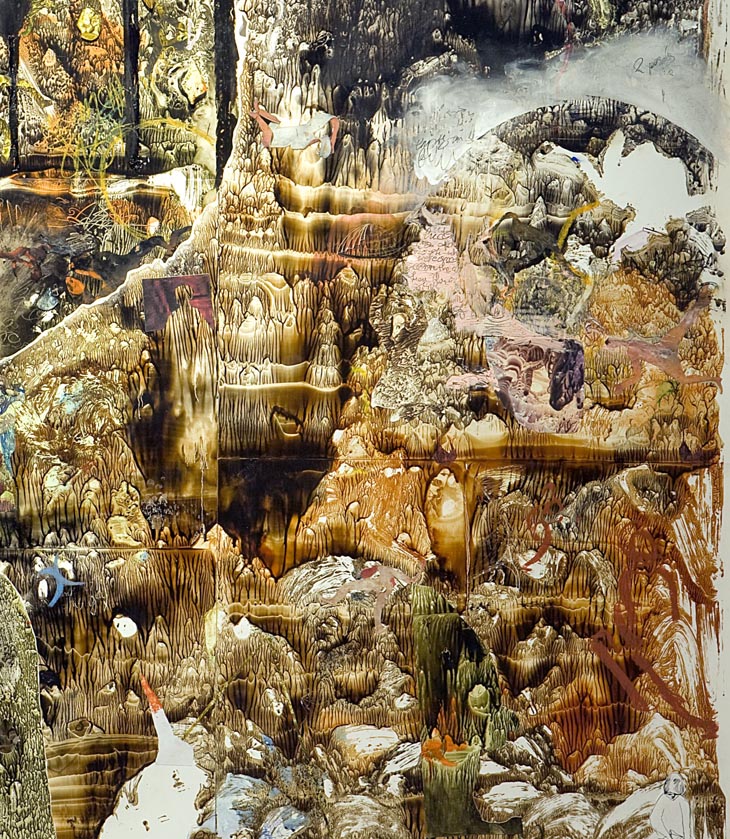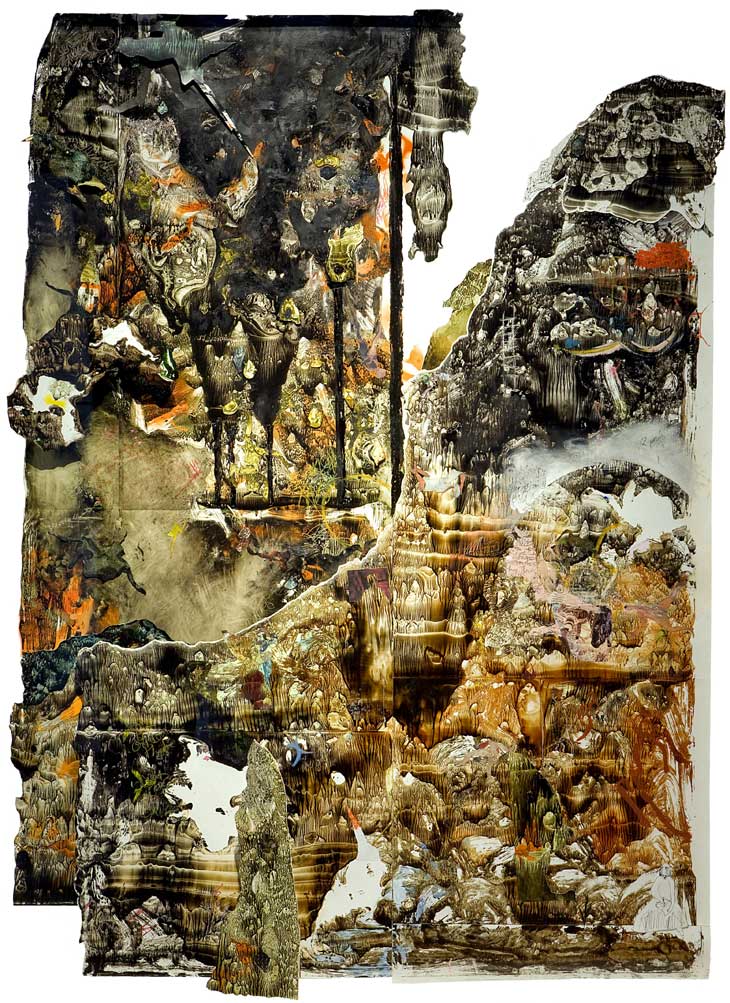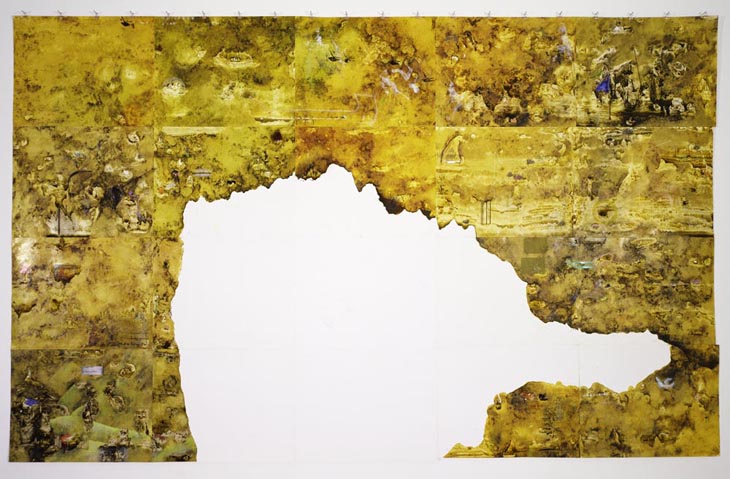



Laleh Khorramian
Some Comments On Empty And Full was made by collaging numerous monoprints together, their abstracted patterns forming a fantastical landscape. In this piece, the monoprints have been made on semi-plastic material, a substance which both replicates celluloid and resists liquid pigment. Again Khorramian reveals and emphasizes details by drawing over and scraping into the surface with marks and note taking. The resulting smears and sluices of contrasting earthy tones are assembled in an irregular shape, giving the illusion of apocalyptic terrain. Influenced by medieval chinese landscapes and its spiritual philosophy of space, the title draws upon notions of the atom and the aggregate, the individual, growth, decay and memory.
Laleh Khorramian’s abstract paintings aren’t just paintings: they are prints. Developed through an intensive process that harmoniously combines both technical skill and unpredictable results, Khorramian begins each work by making a painting onto a sheet of glass. She then transfers the image onto paper by pressing the sheets to the glass while the paint is still wet. The resulting ‘monoprint’ – or single print – is an event, an original irreproducible image, initially made without any direct contact from the artist’s hand. In Eden – 1st Generation, Khorramian uses this process to create a large scalework reminiscent of an aerial-view map. Khorramian often uses herprints to create stop-motion animations, where she combs their texturedand latent topographical imagery to find backdrops, objects,figures, and scenarios to her filmic narratives. She then proceeds todraw, wipe away, and scratch onto the surface of the print like notes
and locations of events – inventing graphic scenarios of violence, intimacy, catastrophe, and imagined or impossible scenes, much of which to be shot and recorded for her films. For example, a number of the details within Eden – 1st Generation were included in her 2005 animation “Chopperlady”.



